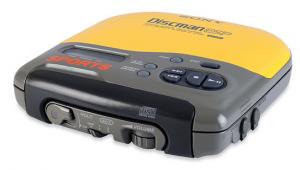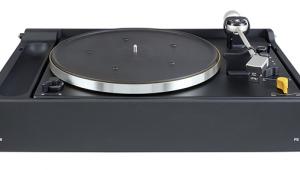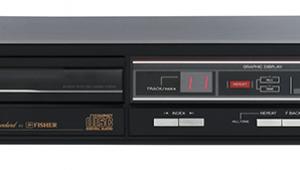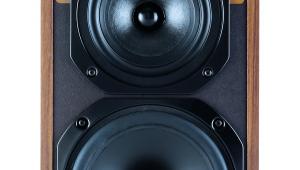Luxman L-30 Amplifier Page 2
![]() Tim Listens
Tim Listens
Amplifier design was a mature technology in Japan in the late 1970s so the L-30 still meets the basic requirements of modern listening, even though it is over 45 years old. It is essentially noiseless, broad in its tonal coverage and (just) powerful enough to generate realistic musical experiences through most types of loudspeaker. My first impressions were of a smooth and refined sound with a plumpness to the bass and a slightly smoothed-off top end. This suggests the amp was voiced to give optimal results with mid-priced MM pick-ups of the era, the essentially flat response of CD highlighting these subtle tweaks.

Striking It Rich
The title track for Ryuichi Sakamoto's album Heartbeat [Virgin America CDVUS46] gives a good idea of what the L-30 is all about. The bassline is gloriously rich and there's plenty of detail in the midrange, the only failing being a lack of bite in the percussion that robs the performance as a whole of some impact. Nevertheless, at moderate listening levels the presentation is fluid and natural – the L-30 has the sound of an expensive unit. Raising the volume reveals the limitations of the simple circuitry – it's the bass that goes first, becoming bloated and unfocused, though the top end remains intact well beyond this point.
This need not be a serious limitation, for with a pair of reasonably sensitive loudspeakers there is still plenty of volume available without sound quality suffering. To my surprise, the bottom-end lift of the L-30 did not make its presence felt with all types of music. Anyone Listening to Brahms' Concerto For Violin, Cello & Orchestra In A Minor, Op.102 [Deutsche Grammophon 410 603-2] would surely deem this amplifier to be tonally neutral, which is another way of saying that it displays an even balance and doesn't get in the way of the music.

Fine Art
At normal listening levels it was the presentation of fine detail that stood out as this amp's main strength – no doubt a result of the straightforward signal path used. Being critical I've heard strings rendered with a better sense of physical depth via amplifiers which are otherwise livelier sounding, but as with so many things in hi-fi this is mostly a matter of taste. The ultimate in high fidelity? Not quite, but it's a nice old thing all the same.
The cheapest model from a company that normally makes expensive components is always going to be of interest. There's enough here to make the L-30 feel and sound like a 'real' Luxman; it's a bit like an Oriental Naim Nait (only with more power, a greater choice of input connectors, better knobs and a superior balance control).
Buying Secondhand
Like a lot of late 1970s Japanese audio equipment, the Luxman L-30 is very reliable provided it is used with care. My advice is therefore to choose an example with the best possible cabinet work and then deal with the faults that are present – if indeed there are any.

Distortion or a lack of output from one channel or the other should lead firstly to an inspection of the fuses, which number eight in total. The ones that protect the output stages must be of the fast-acting (F) type in order to be effective, while the rest should have a time delay characteristic (T) or they will fail at random intervals. The usual cause of output stage fuse failure is excessive DC on one set of loudspeaker terminals. Fault finding on the power amplifier PCB is difficult due to the construction of the unit – for example, the heatsink for the power transistors completely blocks one side of the board.
Twice Removed
A good tip here is that the circuit will function with the heatsink and the output transistors removed (they simply plug in) and it will even drive a reasonably sensitive pair of headphones when working like this. This is the best way to deal with faults that result in DC being present on the outputs or if there is no output at all.

It is, of course, essential to set the power amplifier up carefully as part of any service work – the L-30 has pre-set adjustments for both offset and bias. An insulated screwdriver is essential for this task as the relevant parts are buried deep among the other components.
Hi-Fi News Verdict
Buying the most affordable amp in the Luxman range at the time turned out to be no bad thing after all. Yes, you could have purchased more power and facilities elsewhere, but this simple and tough unit has an appeal all of its own. If you are of the belief that all Japanese transistor amplifiers from the period sound hard and brittle then the Luxman L-30 will surely change your mind.


















































